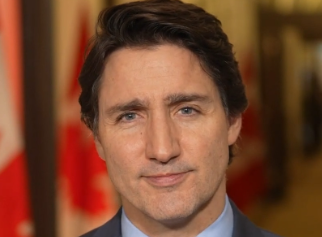
Just days before the highly anticipated 2024 presidential election, ABC affiliate WNEP-TV “accidentally” aired a graphic showing Kamala Harris winning Pennsylvania—a state widely regarded as a key battleground. The broadcast showed Harris with 52% of the vote, comfortably outpacing Donald Trump’s 47%. Supposedly, this incident was merely a “technical mishap” with “randomly generated test data” accidentally broadcast live. Really, ABC? This so-called “glitch” could not have come at a more suspicious time, sending social media and critics of mainstream media bias into a frenzy.
What happened? During ABC’s coverage of the Formula 1 Mexico Grand Prix on October 27, a graphic suddenly popped up on screen showing “results” for Pennsylvania, with Harris claiming victory. ABC quickly issued an apology, dismissing the incident as an innocent equipment test gone awry. But let’s be real: this isn’t the first time mainstream media has come under fire for “accidental” leaks and so-called “glitches” conveniently benefiting one side of the aisle. With such massive implications in the balance, this latest “slip-up” is hard to accept as anything other than calculated conditioning.
Convenient Timing and a Suspicious “Apology”
In response to the uproar, WNEP-TV explained that the numbers were “randomly generated test results” used to ensure their systems function smoothly on election night. But why, of all possible “random” results, did it have to be Kamala Harris winning Pennsylvania with a substantial lead? In politics, especially during the height of election season, nothing is coincidental. Pennsylvania has consistently been a bellwether for presidential races, and it was a critical swing state in both the 2016 and 2020 elections. Why on earth would a “random” test display Harris ahead in Pennsylvania? The timing is impeccable, creating a narrative of a “Harris win” in voters’ minds, intentional or not.
ABC’s attempt to wave off criticism by blaming a “technical error” sounds more like a bad excuse than an apology. Had this been an error in Trump’s favor, the media and the Democratic Party would’ve erupted in outrage, decrying it as propaganda or a misinformation campaign. But because it portrays a Democratic victory, the slip is brushed under the rug, excused as a “test run.”
ABC "accidently" reports Harris win in Pennsylvania pic.twitter.com/k92SEuKnFY
— Iyan Velji (@IyanVelji) November 3, 2024
Media’s Role in “Accidental” Conditioning
This isn’t the first time mainstream media has faced accusations of manipulating narratives around the election. Such “errors” consistently seem to favor one side, subtly building public perception. People who tuned in for the Formula 1 race may have seen the graphic and subconsciously internalized Harris as a frontrunner, if not an outright winner in the state. Polls consistently show Pennsylvania as a toss-up, yet ABC’s “accident” frames the election as though it’s already decided.
The role of media is to inform, not influence. But in 2024, it’s clear the lines are blurred. When networks air “random data” favoring a specific candidate, we’re not just dealing with a technical issue; it’s a glimpse into media bias, or even intentional psychological priming.
The Growing Legacy of “Mistakes” in the Media
Remember 2020? There were multiple instances of similar “technical mishaps” that leaned in Biden’s favor. Election watchers might recall incidents where vote tallies “accidentally” appeared for Biden in battleground states and were later “corrected” only after scrutiny and backlash. This so-called accident fits right into a disturbing pattern. The fact is, these “mistakes” are always “randomly generated” in a way that seems to only help one side. Coincidence? Hardly.
Viewers took to social media, sparking a flood of questions. Was this an attempt at psychological priming, subtly seeding the idea of a Harris victory to the public? Was it an attempt to create a sense of inevitability for Democratic success in a critical state? Social media users noted that if this kind of mistake happened again on November 5, they’d be saving receipts. Trust in the media is plummeting, and incidents like this make it painfully clear why.
Weaponizing “Oops!” Moments: Strategic Sabotage or Innocent Glitch?
ABC’s “accident” fits into a larger scheme we’ve seen time and again from mainstream media. Networks and journalists increasingly play partisan roles, using their platforms to influence public perception while hiding behind plausible deniability. WNEP-TV might say it was just a mistake, but the damage is done. Pennsylvania voters have already been given a sneak peek at a hypothetical Harris victory, fueling a preemptive perception of a Democrat-led win.
The truth is, there’s nothing “random” about this. It was a calculated move, whether conscious or not, to influence voter psychology. Media companies are staffed with professionals who understand the weight of their actions, especially when it comes to airing election results—something they know is highly sensitive and heavily scrutinized. Yet, we’re supposed to believe this was just a one-off accident?
The Broader Implications of These “Mistakes”
With Pennsylvania considered a must-win for either candidate, this “mistake” speaks volumes about the desperation within certain media circles. When you can’t get the public on your side through policies, perhaps pushing a narrative prematurely is your next best bet. And if it backfires, you can always claim it was “random data.” This is the definition of gaslighting the public. Why would any station broadcast test data with fictitious election outcomes in the first place? There are endless ways to test graphics without using polarizing or predictive content.
Furthermore, ABC’s actions could discourage voter turnout for Trump supporters who feel as though the race is already lost. This isn’t merely an error; it’s an attack on election integrity.
Beyond ABC: A Call for Media Accountability
Incidents like this underscore the critical need for accountability in media. If ABC truly wanted to remain neutral, they wouldn’t be pushing the envelope with “random data” that mysteriously favors one side every time. If there were any justice in the media world, we’d see disciplinary actions or investigations for such breaches of trust. At minimum, there should be some assurance that future testing won’t involve speculative graphics that suggest election results.
In an era where faith in media is at an all-time low, networks like ABC bear the burden of responsibility to provide fair, unbiased reporting. But with yet another “accidental” preview of a Harris win in Pennsylvania, ABC has shown it is more interested in shaping narratives than in delivering truthful news.
The Verdict: Don’t Be Fooled by the “Accidental” Narrative
ABC’s “oops” moment reflects the political bias that has become pervasive in American media. The clear bias and patterns are plain to see for anyone who’s been paying attention. This is not about a simple error; it’s a snapshot of a greater trend in the media landscape that raises questions about free, fair, and unbiased coverage. People want transparency, not manipulated glimpses of a reality they haven’t chosen.
The mainstream media, once a trusted institution, is losing credibility faster than they can spin stories. The only thing that’s “random” here is their willingness to own up to these manipulative mistakes. To Pennsylvania voters, here’s a word of advice: trust your own judgment, not the “randomly generated” narratives. If this “accident” showed us anything, it’s that vigilance is essential, and the media is more than willing to nudge reality in the direction they want. Stand strong, question the narratives, and don’t let the spin of mainstream media dictate how you cast your vote.



